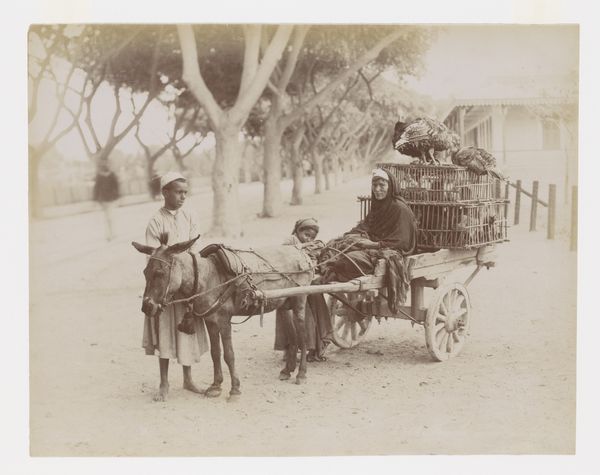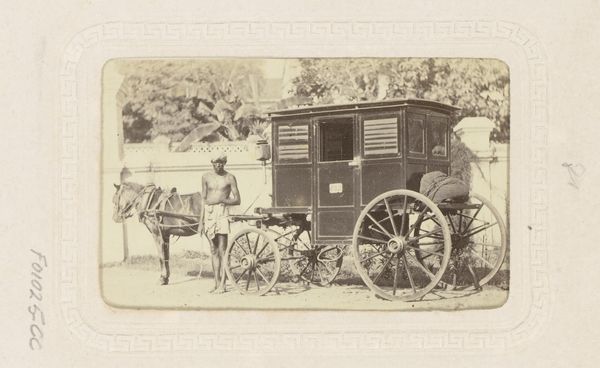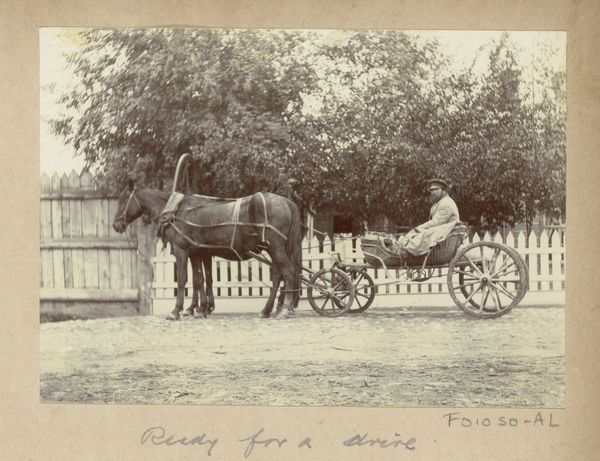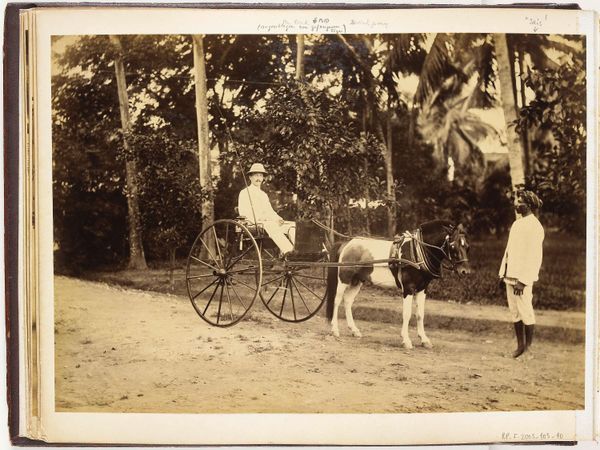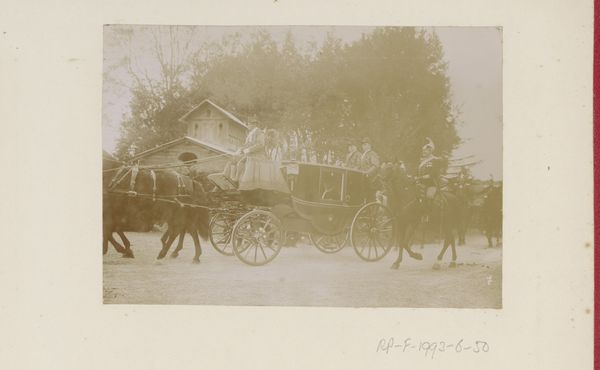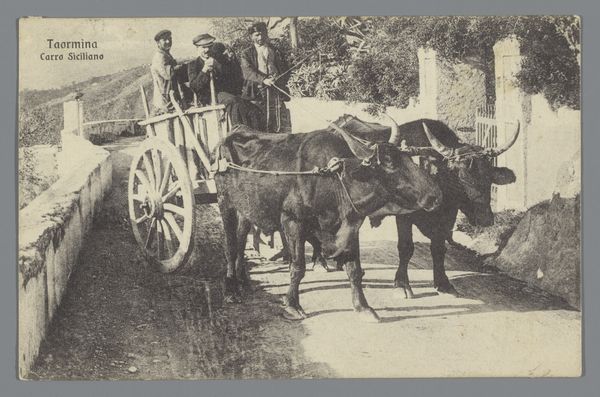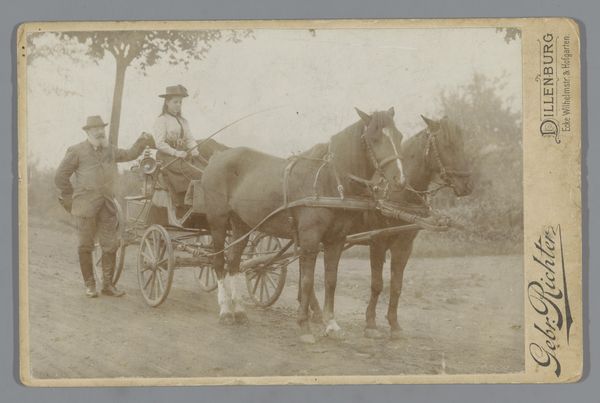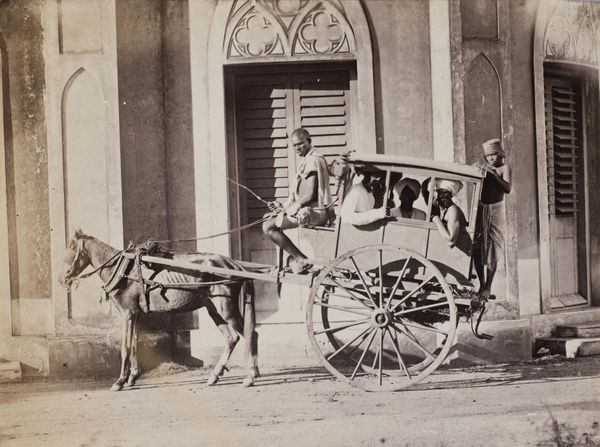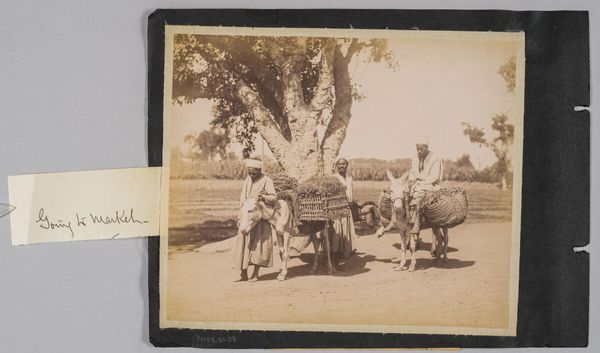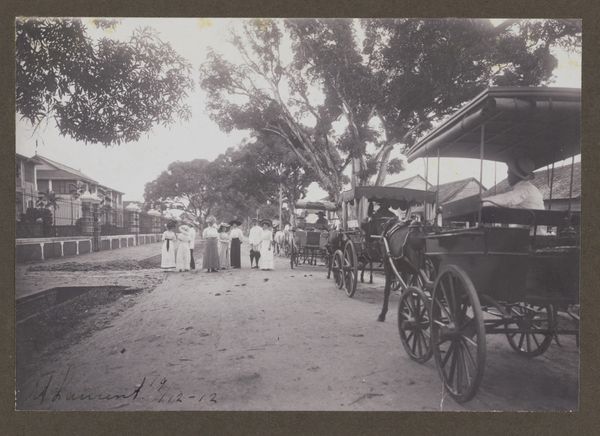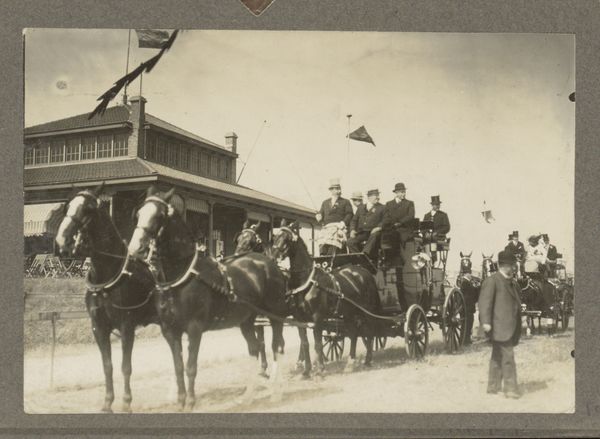
A chariot across the photography studio of C. Varatharajulu and Co. (in Chennai?), Tamil Nadu, India 1860 - 1890
0:00
0:00
photography, albumen-print
#
portrait
#
16_19th-century
#
asian-art
#
photography
#
orientalism
#
genre-painting
#
albumen-print
Dimensions: height 102 mm, width 152 mm, height 123 mm, width 175 mm
Copyright: Rijks Museum: Open Domain
Curator: Let’s explore this albumen print, titled "A chariot across the photography studio of C. Varatharajulu and Co. (in Chennai?), Tamil Nadu, India,” attributed to C. Varatharajulu and Co. It dates sometime between 1860 and 1890. Editor: Immediately striking! The composition has a rather pleasing balance, a stable triangle formed by the horse, chariot, and building, and I note the beautiful, warm sepia tones, contributing to a sense of antiquated charm. Curator: The photograph offers insight into the dynamics of colonial India. The subjects within the chariot, and indeed the very presence of the photography studio, speaks to the interactions and representation of locals mediated through a Western lens. How do you see orientalism reflected? Editor: Well, if you analyze the picture’s form, notice how the strong horizontals--the building's facade, the ground plane--intersect with the strong vertical wheel of the chariot and the more organic curve of the horse. There is a very balanced structure, almost classical, that lends an idealized quality to this everyday scene. Curator: Yes, but let's also consider how studios like Varatharajulu's participated in constructing visual narratives of India. Were these images intended for local consumption, for a colonial audience back in Europe, or both? This tension reflects complex power dynamics and the creation and marketing of an 'exotic' image of the region. The act of photographing itself became a form of cultural documentation, but it simultaneously perpetuated the Western gaze. Editor: That's certainly a vital interpretive layer. However, focusing on the sheer skill demonstrated is unavoidable. The sharp focus on the shop sign juxtaposed with the slightly softer rendering of the figures within the chariot demonstrates incredible technical precision. Curator: Precisely, even seemingly "objective" mediums like photography are shaped by the photographer's intent and the historical context in which the image is created. The child on top of the carriage is such a strange element and speaks volumes, don't you think? Editor: I must admit, considering all elements together does add considerable historical depth beyond just the visual harmony. The picture presents an intriguing mix of spontaneity and a rigidly formal tableau. A genuine snapshot or a crafted narrative, or both, perhaps? Curator: It prompts questions about how identity, representation, and the legacy of colonialism intersect in South Asia, and that makes it worth lingering with this piece, if only for a little while longer. Editor: I quite agree. The artwork creates such an amazing tension between aesthetics and powerful narratives that simply draws you in for repeated analysis.
Comments
No comments
Be the first to comment and join the conversation on the ultimate creative platform.

